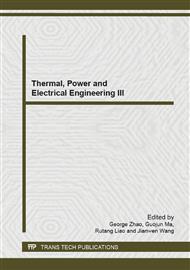p.240
p.245
p.249
p.254
p.258
p.262
p.270
p.274
p.281
Compare the Petrophysics of Formation Type I and II by Mercury Injection Curve Normalization
Abstract:
Study on Formation Type II is so few that affect on tapping the potential [2]. Analyzing petrophysics of Formation Type I and II by mercury injection curve normalization, it’s vital to developing method choice on tapping the potential of Formation Type II. Capillary pressure curves (Pc-curves) from conventional Mercury Injection are hard to analyze and compare because of various shapes. To get typical capillary pressure curves for Formation Type I and II, the curves from Mercury Injection is processed by Function J, and the J function curves and normalized Pc-curves for tabulated thin layers, tabulated thick layers and un-tabulated layers in Formation Type I and II, compare and analyze the influence of permeability on the shape of J function curves and normalized Pc-curves; compare the influence of different kinds of layers with the same permeability order of magnitude on the shape of J function curves and normalized Pc-curves, i.e. the influence of other factors except permeability, to get some visual identification methods and analyze the petrophysics difference between Formation Type I and II which is shown on Pc-curves.
Info:
Periodical:
Pages:
258-261
Citation:
Online since:
June 2014
Authors:
Keywords:
Price:
Сopyright:
© 2014 Trans Tech Publications Ltd. All Rights Reserved
Share:
Citation:


